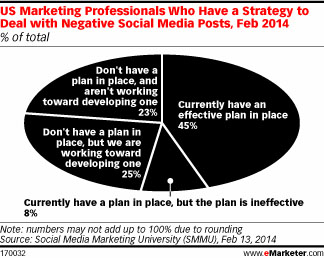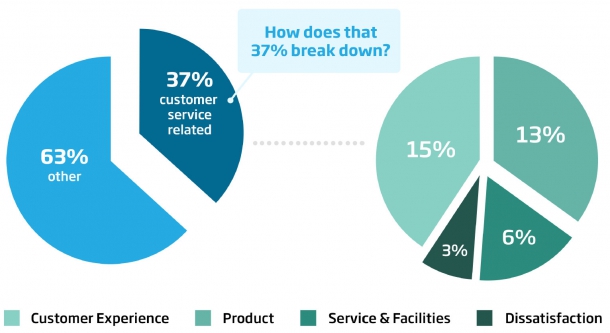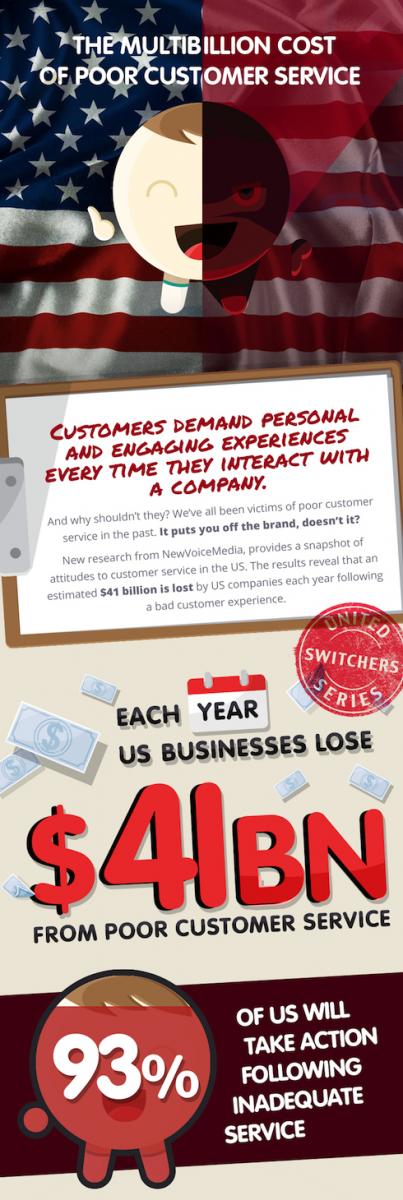By adaptive - May 13th, 2014

Social media has transformed how corporations manage their customer services, but can your business do more?
Increasingly consumers are turning to social media when they have a customer service query. Research from Conversocial revealed that over any given day, 37% of tweets to companies were customer service communications, with 3% of those being negative.
New figures from eMarketer also show that more than half of all marketers don’t have a structured plan to deal with negative social media communications. However, the absence of a written policy, marketers do respond quickly to the negative social media comments that are directed at their companies. The question though, is how this could be improved, and how could corporations become more proactive in this area?
Chad Mitchell, Senior Director, Digital Communications at Walmart told Digiday: “Social does a great job of giving people a voice. The bad part is it can be amplified. Sometimes it’s exaggerated. Walmart seems to be the subject of many great urban legends and jokes, so we need to separate what’s a legitimate complaint versus someone mouthing off.”
With eMarketer commenting: “Is responding without a plan a good thing? While many marketers certainly do so without a hitch, the room for error is clear. And since negative buzz can cause anxiety—or worse—among marketers that don’t have a plan in place, it can easily spur intemperate or otherwise poor responses.”
Developing a new regime within your corporation that actively reduces negative customer service has been dubbed Next Contact Avoidance (NCA). Enkata says: “NCA trains Customer Service Representatives (CSRs) on how to anticipate and pre-empt future contacts. It has been shown to reduce call volumes by 20% to 30% in twelve months, and improve customer retention by 3% to 5%.”
A Next Contact Avoidance strategy offers advantages across multiple levels within a company including:
Executives:
At the VP and C level there is often a strong focus on the bottom line. A growing realization of the competitive advantage of customer service aligns well with NCA strategies by reducing the effort required by customers to do business.
Employees:
CSRs have a proactive focus working within an NCA strategy. Their job is to not just resolve customers’ current issues, but anticipate their future ones.
Customers:
A Harvard Business Review study showed that the top source of loyalty erosion stemming from customer centre service was having to re-explain an issue (56%). Next Contact Avoidance goes directly to the heart of that issue.
“What customers really want (and rarely get) is just a satisfactory solution to their service issue,” states Matthew Dixon, Karen Freeman and Nicholas Toman in the Harvard Business Review story ‘Stop Trying to Delight Your Customers.’ "The team presents a new methodology and metric to measure the amount of effort a customer must put into customer service interactions. It’s called the Customer Effort Score. High scores are bad. The team found that asking the simple question ‘How much effort did you personally have to put forth to handle your request’ is a better predictor of increased spending than net promoter or customer satisfaction."
Being more proactive with the customer services your corporation is managing and even looking further to anticipate the issues your customers may have in the future, is essential in an age when consumers have massive amounts of power over the brands they patronise.
Tweet for service
One social media network above all others is transforming the customer services landscape. Twitter is fast becoming the preferred method of communications for customer services queries. The 140 characters can however, be just the beginning of a relationship that could stretch long into the future. Brands though, must become more active with their use of Twitter in this context.
Conversocial says: “Proactive Social Customer Service presents the opportunity to meet and exceed consumer expectations, deepen customer relationships and ultimately boost the value of your customers - through their business and their advocacy. As social customer service becomes more serious, with more of your customers turning towards social media for customer service (research from last year shows 47% of social users have used social care), you have to move a step ahead to break their expectations of good service.”
And Conversocial concludes: “Looking out for and identifying problems at their earliest stage is the best way to ensure that you’re on top of potential developing crises. Developing the right response before issues escalate through outreach to individuals is the best way to evade damaging criticism online.”
The proactive approach also has a clear commercial component. Research by NewVoiceMedia showed: “53% of switchers left because of a lack of appreciation, in favour of a company that will value their business. Nearly half (49%) were put off by having to repeat themselves to multiple agents and one in ten ditched a company for being kept on hold for too long. However, our research proves that organizations can significantly increase their business if they invest in providing a positive customer experience. Following a good service, 70% of respondents would be more loyal and almost half (49%) would use the company more frequently.”
With Olivier Njamfa, CEO of Eptica stating: “When it comes to Twitter companies are playing a dangerous game by establishing a presence and then failing to engage with customers. This could well backfire, leading to negative feedback spreading through the social network and damaging their overall brand. The web, email and social media are fast becoming the channels of choice for consumers, yet the biggest brands in the country are struggling to cope.”
The development of ‘actionable insight’ is at the heart of proactive customer services. Fire fighting negative comments is simply a waste of resources. Simply monitoring Twitter for what can begin as simple grumbles but quickly escalate into something much more serious and acting upon that insight is at the core of proactive customer service.
Indeed, fixing a customer services issue before it happens has been the Holy Grail of this sector decades. The early warning that social media offers finally delivers the tools businesses need to obtain that goal.
[Image Source: Freedigitalphotos.net]



